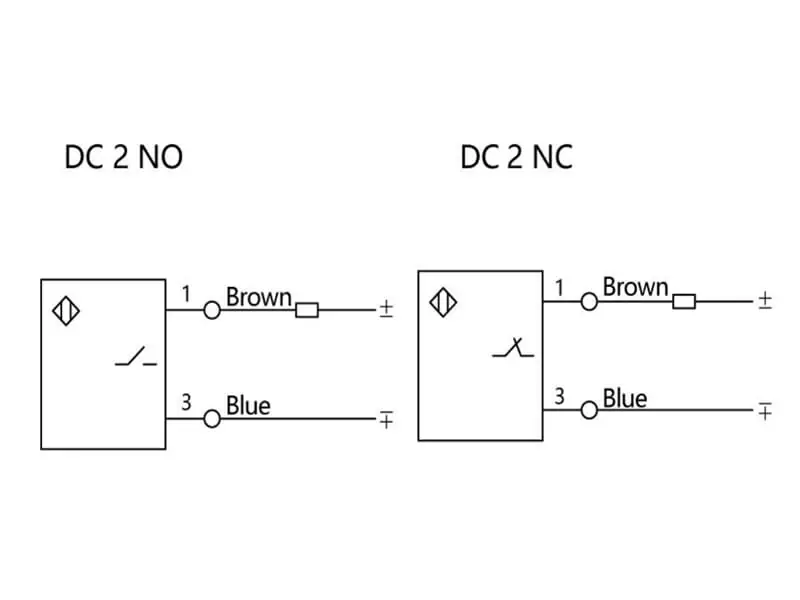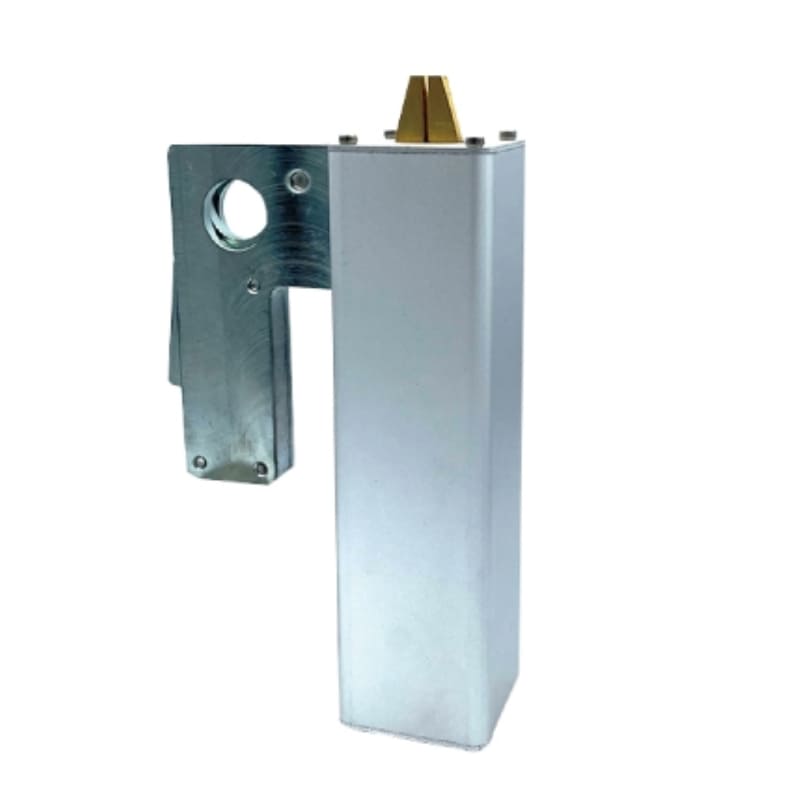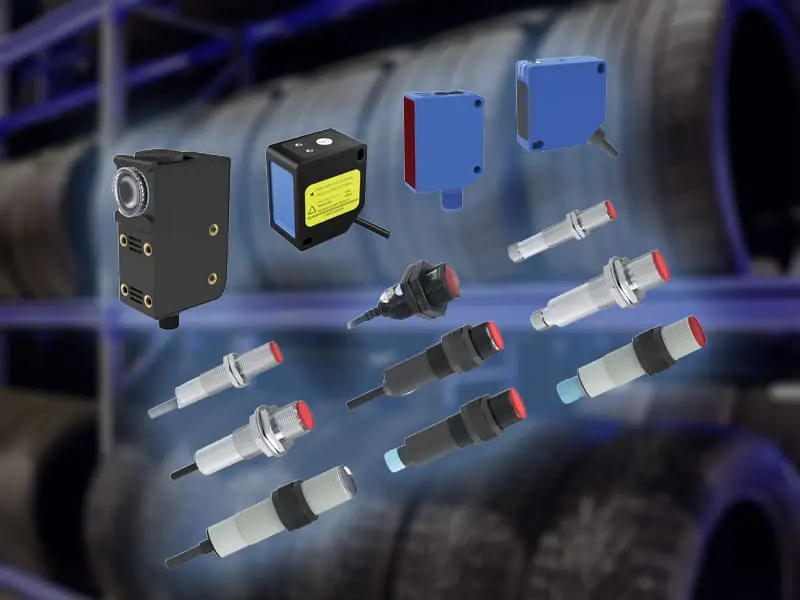In the field of automatic control, proximity switches with switching quantities play a crucial role, and normally open proximity switches and normally closed proximity switches are common types.
They seem similar but have many differences and exert their own advantages in different scenarios. This article will thoroughly analyze the similarities and differences of these two types of proximity switches to help you better understand their characteristics and make accurate choices in practical applications.

The Meanings of Normally Open and Normally Closed
Normally Open (NO)
Meaning: Under normal conditions (without being triggered by external factors), the contact of the switch is disconnected. It’s like a door that is always closed. Without external force, the door remains closed and current cannot pass through this “door” (circuit). For example, we can imagine a simple push-button switch. When not pressed, it is in the normally open state and the circuit does not form a path.
Electrical Characteristics: Its resistance is nearly infinite under normal conditions because the contact is disconnected and current can hardly pass. Only when triggered by external factors (such as an approaching object activating the proximity sensor), the contact closes, the resistance drops sharply, and the circuit conducts.
Normally Closed (NC)
Meaning: On the contrary, under normal conditions, the contact of the switch is closed. It’s like a road that is always open. Vehicles (current) can pass normally without special circumstances. For example, in some safety protection devices, the switch is normally closed. When there is an anomaly (such as the protective door being opened), the switch disconnects, thereby serving functions such as alarming.
Electrical Characteristics: The resistance is nearly zero under normal conditions and the circuit is in a conducting state. When the trigger condition is met, the contact opens, the resistance becomes infinite, and the circuit breaks.

The Similarities and Differences between Normally Open Proximity Switches and Normally Closed Proximity Switches
The similarities between normally open proximity switches and normally closed proximity switches
The same working principle basis: Whether it is a normally open or normally closed proximity switch, they both work based on the induction principle. Generally, electromagnetic induction, capacitance change, or photoelectric effect is utilized. When an object approaches within a certain distance, the sensor can detect the object’s presence and change the circuit’s on-off state according to whether it is normally open or closed.
Similarity in application scenarios: They are both widely used in many fields such as automatic control systems, industrial production equipment, security systems, etc. For example, on an automated production line, both normally open and normally closed proximity switches can be used to detect the position of materials to control the subsequent processing flow.
The differences between normally open proximity switches and normally closed proximity switches
Different circuit on-off conditions in the initial state
The circuit of a normally open proximity switch is disconnected when no object is approaching. While the circuit of a normally closed proximity switch is conducting when no object is approaching. This is their most intuitive difference and also determines the different initial state considerations in circuit design and application.
Different impacts of fault manifestations on the system
If a normally open proximity switch malfunctions (such as being damaged and unable to close normally), when it needs to close but cannot, the subsequent circuit will not work properly and the equipment may stop operating. For example, in an automatic packaging machine, a normally open proximity switch is used to detect whether the packaging material is in place. If the switch malfunctions and cannot close, the packaging process will be interrupted.
If a normally closed proximity switch malfunctions (such as being unable to open normally), when the circuit does not need to conduct but still conducts, it may cause misoperation of the system. For instance, in a safety protection system, a normally closed proximity switch is used to detect whether the protective door is closed. If the switch malfunctions and cannot open, the system may mistakenly believe that the door is always closed, presenting potential safety hazards.

The respective advantages of Normally Open Proximity Switches and Normally Closed Proximity Switches
Advantages of Normally Open Proximity Switches
High safety (in specific scenarios): In some equipment start-up control scenarios with high safety requirements, normally open proximity switches are more suitable. Because only when all safety conditions are met (such as the protective device is in place, triggering the normally open proximity switch to close), the equipment can start, which can avoid the danger of accidental start-up.
Good signal clarity: The output signal of a normally open proximity switch is stably in the “disconnected” state under normal non-triggered conditions. When an object approaches and triggers it, the signal changes from “disconnected” to “connected”. This signal change is very clear and is easier to judge and handle in circuit design, especially for some simple logic control circuits.
Advantages of Normally Closed Proximity Switches
High reliability (in continuous working scenarios): In some scenarios where it is necessary to continuously detect whether an object exists or whether the position is normal, normally closed proximity switches perform well. For example, in the deviation detection of conveyor belts, the normally closed proximity switch is always in the closed state. As long as the conveyor belt operates normally, the switch remains closed. Once the deviation triggers the switch to open, an alarm can be issued promptly. Since it is in the closed state during normal operation, it is relatively less likely to cause misoperation for some minor interferences or short-term signal fluctuations.
Energy saving (in some scenarios): In certain application scenarios, normally closed proximity switches may be more energy-efficient. Because it is closed under normal conditions, some accessory control circuits (such as indicator lights, etc.) can be directly connected to the negative pole of the power supply through the normally closed switch. Only when the switch operates will the circuit state change. In contrast, it may reduce some unnecessary power consumption.

Should You Choose Normally Open Proximity Switches or Normally Closed Proximity Switches
Consider safety requirements: If the safety of the system is of utmost importance and it is desired that the equipment can start only after all safety conditions are clearly met (by triggering the proximity switch to close), then normally open proximity switches are a better choice. For example, in the detection of protective fences of dangerous machinery, the use of normally open proximity switches can ensure that the machinery can operate only when the protective fence is completely closed and the switch is closed.
Consider system stability and anti-interference ability: For systems that need to work stably in complex environments and are sensitive to minor interferences and signal fluctuations, normally closed proximity switches may be more suitable. For example, in some outdoor automated equipment, normally closed proximity switches can better resist false triggers caused by environmental factors (such as electromagnetic interference, vibration, etc.) because it is closed under normal conditions and has a certain “immunity” to short-term interference signals.
Consider the complexity of circuit design and logic control: If the circuit design is relatively simple and the judgment requirements for signal changes are intuitive and clear, normally open proximity switches may be easier to handle. But suppose the circuit already has a more complex logic and needs to consider the combination of multiple signals comprehensively. In that case, the choice needs to be made based on specific logic requirements and the coordination of the overall system. Sometimes, it may even be necessary to use both normally open and normally closed proximity switches simultaneously to meet different functional requirements.
When choosing between normally open and normally closed proximity switches, multiple factors such as safety requirements of the application scenario, system stability, circuit design, and energy saving need to be comprehensively considered to make the most appropriate choice based on the actual situation. It is hoped that through this article, readers can have a deeper understanding of the normally open and normally closed types of proximity switches with switching quantities and be able to accurately select the type in practical applications.
Explore Bedook: Your Trusted Sensor Manufacturer
At Bedook, we specialize in designing, developing, and manufacturing a comprehensive range of proximity sensors and switches. Our extensive product lineup includes:
With over 10,000 detailed product variations and a robust R&D team, we take pride in our ability to meet your unique requirements with tailored solutions and reliable performance.
Whether you’re seeking off-the-shelf products or customized designs, Bedook offers the expertise and production capacity to ensure your satisfaction.
We value your interest in our products and warmly encourage you to send us an inquiry. Let us help you find the perfect sensor solution for your application.
Thank you for considering Bedook—your trusted partner in innovation and quality manufacturing. We look forward to collaborating with you!











